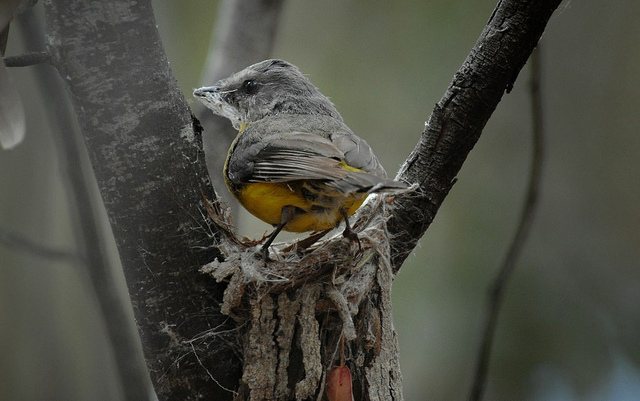Behaviour
Call
A variety of high bell-like piping, a repeated ‘chop chop’ and some scolding notes.
Diet
Insects, spiders and other arthropods. They are caught mostly on the ground, with the bird pouncing onto them from a low perch.
Movement
Most birds are sedentary or resident, but some move from higher elevations to the lowlands in winter.
Breeding
The female builds the nest in a fork in a shrub or small tree, usually within six metres of the ground. The nest is a woven cup of strips of bark, grass, fine twigs, moss and other vegetation, bound with spider web and lined with fine material and leaves. Two to three eggs are laid, and are incubated by the female, but both parents care for the young birds. There may be up to three clutches of eggs laid each season.
Field Guide
Improve your identification skills. Download your Eastern Yellow Robin field guide here!





